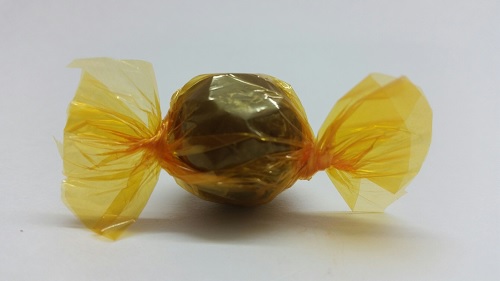n the world of confectionery, where taste and presentation are paramount, the humble caramel wrapper plays a crucial role. These wrappers are not just a protective layer; they are a canvas for creativity and a part of the candy-making tradition. Among the diverse materials used for caramel wrapping, cellophane wrappers stand out for their unique qualities. In this article, we'll delve into the fascinating world of cellophane caramel wrappers, their history, and why they continue to be a favorite choice for sweet treats.
The History of Cellophane
Before we explore cellophane caramel wrappers, let's uncover the origins of cellophane itself. Cellophane is a transparent, flexible film made from regenerated cellulose. It was first developed in the early 20th century by Swiss chemist Jacques E. Brandenberger, who was attempting to create a waterproof fabric. Instead, he stumbled upon cellophane, a material that would revolutionize packaging and food preservation.
Cellophane as a Candy Wrapper
The introduction of cellophane to the world of candy packaging was nothing short of a confectionery revelation. Here's why cellophane wrappers quickly became a staple for caramel and other sweet treats:
-
Transparency: Cellophane's transparency allows the consumer to see the candy inside, enticing them with a sneak peek of the sweet delight. This visual appeal makes it perfect for showcasing beautifully crafted candies.
-
Crinkle and Rustle: The crinkling sound of cellophane being unwrapped is an auditory cue that excites the senses and adds to the overall candy experience. It's a part of the nostalgia associated with enjoying sweets.
-
Protection: Cellophane is moisture-resistant and helps protect caramel and other candies from humidity, preserving their freshness and texture.
-
Customization: Cellophane caramel wrappers come in various colors and can be easily customized with branding, making them an excellent choice for marketing and gifting purposes.
-
Eco-Friendly: Cellophane is biodegradable and derived from renewable resources, making it an eco-conscious choice for candy makers concerned about sustainability.
Caramel Wrapping Artistry
Beyond their practical benefits, cellophane caramel wrappers are also a canvas for artistic expression. Candy makers often employ various folding techniques and decorative twists to transform a simple piece of cellophane into a work of art. This artistry enhances the overall presentation of the candy, making it an appealing choice for gift-giving and special occasions.
The Future of Cellophane Caramel Wrappers
As the world becomes more environmentally conscious, cellophane wrappers are likely to maintain their popularity. Their biodegradability and sustainable production methods align with the growing demand for eco-friendly packaging materials. Candy makers are also exploring innovative ways to reduce waste by using minimalistic cellophane wrapping while still creating visually stunning presentations.
The Origins of Cellophane Caramel Wrappers
Cellophane, a transparent, flexible film made from cellulose, first entered the scene in the early 20th century. It was developed by Swiss chemist Jacques E. Brandenberger in the pursuit of creating a waterproof tablecloth. However, it didn't take long for confectioners to recognize its potential for candy packaging. The first cellophane-wrapped candy, a caramel, hit the market in 1912, marking the birth of a packaging revolution in the candy industry.
Properties that Make Cellophane Irreplaceable
-
Transparency: Cellophane is prized for its crystal-clear transparency. This property allows confectioners to showcase their candies, enticing customers with a tempting preview of what lies within.
-
Sealability: Cellophane's ability to seal tightly ensures that candies remain fresh and protected from moisture and contaminants. It acts as a dependable barrier while preserving the candy's aroma and flavor.
-
Flexible and Foldable: Cellophane can be easily molded and folded around candies of various shapes and sizes, making it versatile for packaging a wide range of confections.
-
Resistance to Odors and Tastes: Cellophane's excellent resistance to absorbing odors and tastes ensures that your caramel candies taste just as delightful as when they were first crafted.
Why Cellophane Caramel Wrappers are Timeless
-
Preservation of Tradition: Caramel candies, often made using time-honored recipes, are a nostalgic treat. Cellophane wrappers preserve this tradition, allowing consumers to enjoy the same classic taste and presentation they've cherished for generations.
-
Aesthetic Appeal: Cellophane's glossy finish enhances the visual appeal of caramel candies. It catches the light, making the candies look more enticing on store shelves.
-
Consumer Confidence: Transparent packaging instills confidence in consumers. They can see the product before purchasing, ensuring they get exactly what they desire.
-
Freshness Assurance: Cellophane caramel wrappers create a protective barrier that keeps the candies fresh, maintaining their quality from production to consumption.
-
Customization: Confectioners have the option to customize cellophane wrappers with their branding and design, adding a personal touch to their products.
For More Info:-
Caramel wrappers
Caramel wrappers wholesale
Cellophane caramel wrappers
Caramel wrapping rolls







